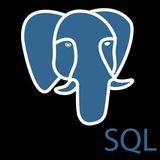https://wiki.postgresql.org/wiki/PostgreSQL_derived_databases
A list of PostgreSQL derived forks and rebranded distributions in alphabetical order.
A list of PostgreSQL derived forks and rebranded distributions in alphabetical order.
👍1
https://akashcsharma.medium.com/demystifying-database-internals-part-2-deep-dive-into-storage-engine-of-dbms-episode-i-paging-2f748a078d22
Deep dive into Storage Engine of DBMS Episode I(Paging, Buffer Pool Manager, Write Ahead Log)
Deep dive into Storage Engine of DBMS Episode I(Paging, Buffer Pool Manager, Write Ahead Log)
Medium
Deep dive into Storage Engine of DBMS Episode I(Paging, Buffer Pool Manager, Write Ahead Log)
Introduction:
👍1
https://www.linkedin.com/pulse/understanding-data-corruption-postgresql-shyam-kumar-9kvwc
Understanding Data Corruption in PostgreSQL
Understanding Data Corruption in PostgreSQL
Linkedin
Understanding Data Corruption in PostgreSQL
Data corruption is a real challenge in any technical environment. Imperfections in technical equipment can lead to data damage, whether in memory, on disk, or during transfer via interface cables.
https://www.highgo.ca/2021/01/27/avoiding-identifying-and-dealing-with-postgresql-database-corruption-part-1/
Avoiding, Identifying, and dealing with PostgreSQL database corruption
Avoiding, Identifying, and dealing with PostgreSQL database corruption
Highgo Software Inc. - Enterprise PostgreSQL Solutions
Avoiding, Identifying, and dealing with PostgreSQL database corruption - Part 1 - Highgo Software Inc.
All the things that can happen to databases, corruption is not the one that happens frequently, but when it does it can result in major downtime and data loss. Probably it is one of the most terrifying things for a DBA to come across and the best way to deal…
https://www.cybertec-postgresql.com/en/how-to-corrupt-your-postgresql-database/
How to corrupt your PostgreSQL database
How to corrupt your PostgreSQL database
CYBERTEC PostgreSQL | Services & Support
How to corrupt your PostgreSQL database
This article shows how to corrupt a PostgreSQL database - or what you should avoid if you don't want a corrupted database.
👍1
https://rasiksuhail.medium.com/guide-to-postgresql-table-partitioning-c0814b0fbd9b#:~:text=Hash%20partitioning%20in%20PostgreSQL%20is,Partition%20makes%20querying%20faster.
Guide to PostgreSQL Table Partitioning
Guide to PostgreSQL Table Partitioning
Medium
Guide to PostgreSQL Table Partitioning
PostgreSQL is a powerful open-source relational database management system that offers various advanced features for managing large and…
https://www.timescale.com/learn/when-to-consider-postgres-partitioning
When to Consider Postgres Partitioning
When to Consider Postgres Partitioning
Timescale
When to Consider Postgres Partitioning | Timescale
Postgres partitioning is a powerful tool for scaling your database. This guide explains how partitioning works and when to use it.
https://sparktpoint.com/postgresql-partition-by/
PARTITION BY in PostgreSQL
PARTITION BY in PostgreSQL
Spark Tutorial Point
Using PARTITION BY in PostgreSQL - Apache Spark Tutorial
In PostgreSQL, an advanced SQL feature that helps in managing large tables efficiently is table partitioning, which can be crafted using the 'PARTITION BY'
https://dev.to/nightbird07/exploring-the-limitations-of-postgres-partitioning-lessons-learned-and-best-practices-5cj9
Exploring the Limitations of Postgres Partitioning: Lessons Learned and Best Practices
Exploring the Limitations of Postgres Partitioning: Lessons Learned and Best Practices
DEV Community
Exploring the Limitations of Postgres Partitioning: Lessons Learned and Best Practices
Postgres partitioning is a popular technique for horizontally slicing large tables into multiple...
What is a constraint in PostgreSQL?
Ans: A set of conditions defining the type of data that can be input into each column of a table. Constraints are used to ensure data integrity in a table and prevent undesired actions.
Ans: A set of conditions defining the type of data that can be input into each column of a table. Constraints are used to ensure data integrity in a table and prevent undesired actions.
What is Multi-version Concurrency Control in PostgreSQL?
Multi-version Concurrency Control or MVCC is an advanced technique in PostgreSQL. It enhances database performance in multi-user scenarios. This means that while querying a database each transaction sees a snapshot of data (a database version) as it was some time ago, regardless of the current state of the underlying data. This protects the transaction from viewing inconsistent data that could be caused by (other) concurrent transaction updates on the same data rows.
Put simply, MVCC creates multiple versions of a single database record, enabling various transactions to access different versions of one database record without conflicting with one another, thereby allowing simultaneous transitions.
Multi-version Concurrency Control or MVCC is an advanced technique in PostgreSQL. It enhances database performance in multi-user scenarios. This means that while querying a database each transaction sees a snapshot of data (a database version) as it was some time ago, regardless of the current state of the underlying data. This protects the transaction from viewing inconsistent data that could be caused by (other) concurrent transaction updates on the same data rows.
Put simply, MVCC creates multiple versions of a single database record, enabling various transactions to access different versions of one database record without conflicting with one another, thereby allowing simultaneous transitions.
👍1
What is an index in PostgreSQL?
An index is a special data structure related to a table and used for storing its important parts and enabling faster data search and retrieval. This is achieved by creating a sorted data structure that allows PostgreSQL to locate rows more quickly compared to a full table scan. Indexes are especially efficient for large databases, where they significantly enhance query performance.
An index is a special data structure related to a table and used for storing its important parts and enabling faster data search and retrieval. This is achieved by creating a sorted data structure that allows PostgreSQL to locate rows more quickly compared to a full table scan. Indexes are especially efficient for large databases, where they significantly enhance query performance.
👍1
What is partitioning in PostgreSQL?
It’s the process of splitting a large table into smaller pieces. It can be done through several methods, including range partitioning, list partitioning, and hash partitioning.
It’s the process of splitting a large table into smaller pieces. It can be done through several methods, including range partitioning, list partitioning, and hash partitioning.
